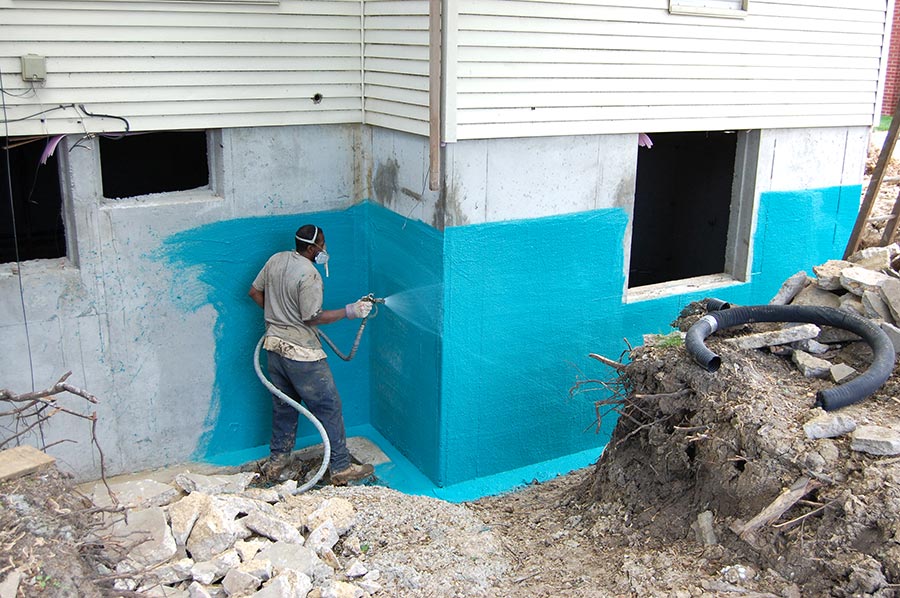Essential Waterproofing Tips for New Building

When embark on a new building project, one often thinks about the aesthetic appeal and structural integrity of the building. However, neglecting waterproofing can lead to serious consequences that may not surface until later on. Proper waterproofing is critical for all home and commercial building because it safeguards from water damage, which can compromise your investment, lead to expensive repairs, and create an unwholesome living environment.
Understanding the different facets of waterproofing is crucial for homeowners and builders alike. Starting with selecting the right waterproofing products to deciding whether to take a DIY approach or hire professionals, having a strong understanding of waterproofing strategies can save thousands in potential repairs. This guide will explore all you should understand about waterproofing, including why it matters, the signs that indicate your property may need care, and the most effective techniques to ensure your new construction stays protected and safe for years to come.
Understanding the Value of Moisture Protection
Moisture protection is a essential aspect of any recent construction project, shielding structures against the destructive effects of water infiltration. Water can seep into foundations, walls, and ceilings, leading to a variety of issues including mold growth, compromise to the structure, and expensive repairs. Ensuring effective waterproofing from the start not only preserves the integrity of the building but also increases its longevity and worth over the long run.
Ignoring the importance of waterproofing can lead to serious financial repercussions. The costs associated with water damage repairs can rise quickly, often amounting to a substantial amount of dollars. This makes spending in top-tier waterproofing systems a smart decision for property owners and builders alike. Proper waterproofing practices can essentially save money in the long run by minimizing the risk of significant repairs and maintenance.
Furthermore, moisture protection plays a crucial role in creating a secure living environment. Wet and humid areas are breeding places for mold and mould, which can compromise indoor air quality and pose health risks to occupants. By prioritizing waterproofing in new construction, contractors and homeowners can create areas that are not only long-lasting but also encourage a secure and comfortable atmosphere.
Common Moisture-Proofing Methods and Strategies
Regarding effective waterproofing, a number of techniques can be applied to protect a structure from moisture harm. One popular method is the use of waterproofing membranes, that are sheets or liquid coatings which create a defense against moisture. These membranes can be installed to walls, foundations, and roofs, providing a continuous layer of protection. Additionally, sheet membranes are frequent in areas prone to heavy water exposure, such as basements and balconies, ensuring that water does not penetrate vital structural components.
Another effective waterproofing solution is the implementation of drainage systems, such as French drains or sump pumps. These systems redirect water away from the foundation, reducing the risk of flooding and water accumulation. Proper drainage is crucial in maintaining the stability of buildings, particularly in regions with heavy rainfall or poor soil drainage. By using these systems in conjunction with waterproofing membranes, homeowners can substantially reduce water damage risks.
In addition to membranes and drainage solutions, the selection of appropriate waterproofing coatings is crucial for areas like bathrooms and kitchens. important source and sealants are designed to repel moisture, stopping mold and mildew growth. Moreover, specialized products for tile waterproofing can safeguard floors and walls from moisture penetration. Choosing high-quality waterproofing products ensures lasting performance and effectiveness, thereby safeguarding your investment and improving the comfort of your living spaces.
Choosing the Appropriate Approach for Your Home
When considering waterproofing for your house, it is crucial to evaluate your individual needs and the features of your property. Each home presents individual challenges, whether it is a cellar prone to flooding, a flat roof that collects water, or outdoor structures subjected to the elements. Understanding these elements will help you decide whether interior or exterior waterproofing methods would be better effective. Consulting with a professional can also provide insights tailored to your situation, ensuring you make educated decisions.
Another essential aspect to consider is whether to take the DIY route or hire expert services. Do-it-yourself waterproofing can be economical, especially for smaller projects or upkeep tasks. However, specialized waterproofing services often provide long-lasting results and apply technical techniques that can significantly minimize the risk of water damage. Reviewing the advantages and disadvantages of each option is vital, as the right choice can save you work, potentially thousands in repairs down the road.
Finally, spending in the top waterproofing products available will yield the best results. Researching and picking top-grade materials, such as established coatings and sealants, will enhance the success of your waterproofing efforts. Look for products designed particularly for your intended application—be it roofs, bathrooms, or driveways—ensuring they meet industry standards. By prioritizing high standards in your waterproofing strategy, you can create a durable barrier against moisture, preserving your house’s integrity and safeguarding your investment.

